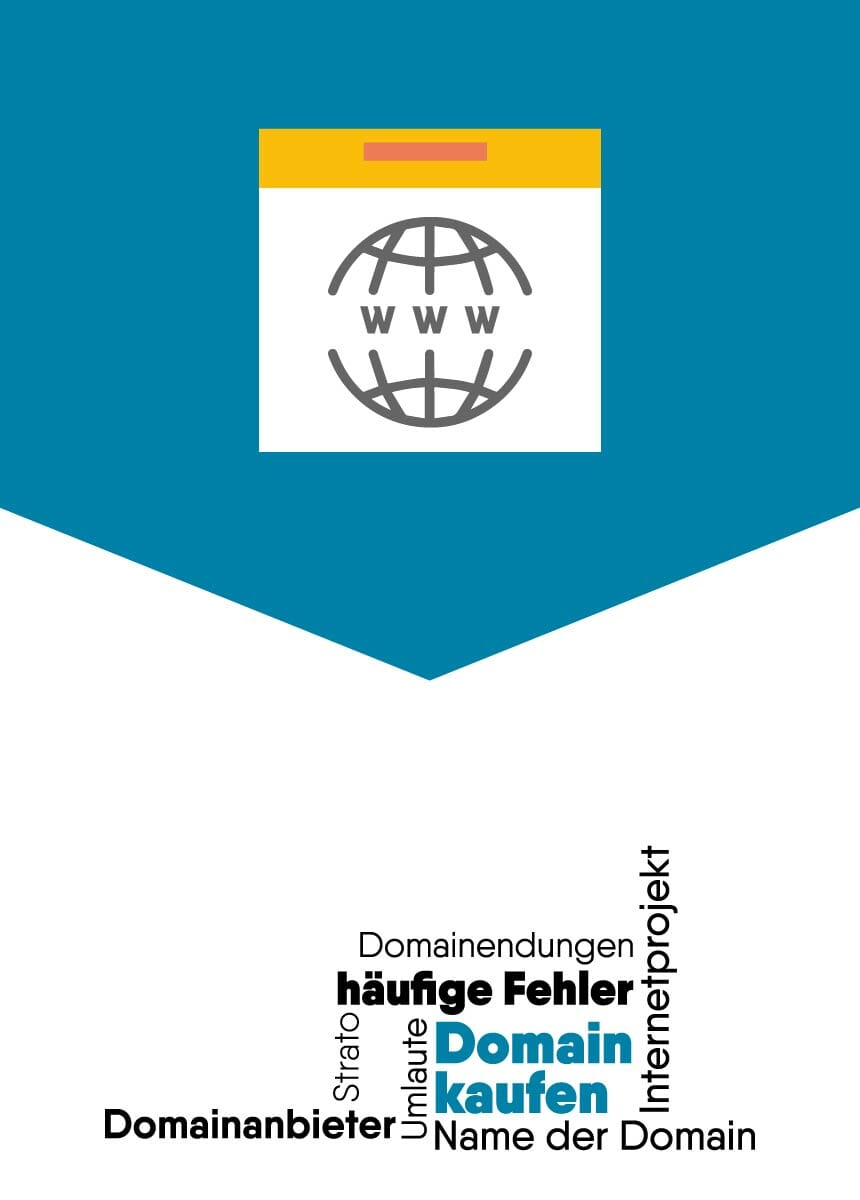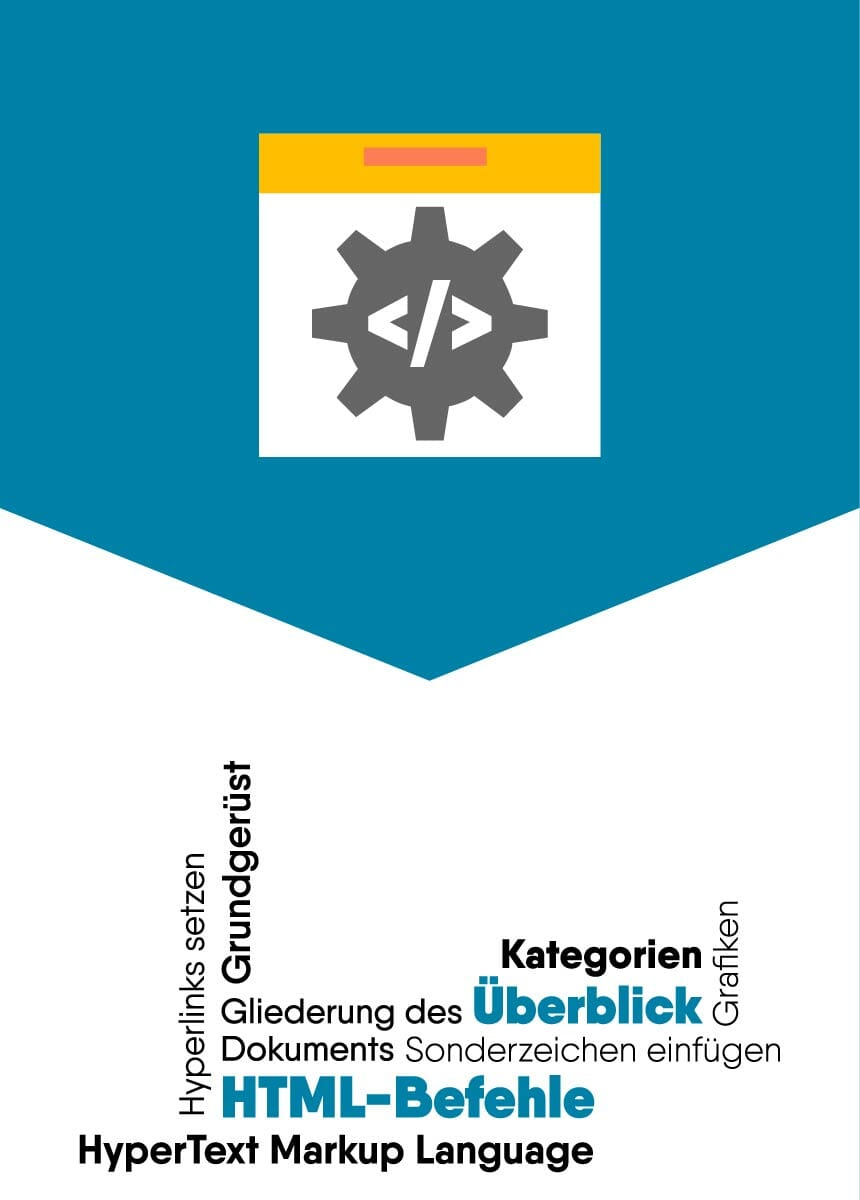It happens again and again in projects that you have to use special characters. If UTF-8 is just not possible or you need a different character representation for CSS, the following lists often help.
The lists with HTML umlauts and special characters are not complete. It is possible that for certain topics some HTML special characters or umlauts are not listed. However, the most common characters are included in any case.
- HTML umlauts
- Special characters HTML
- Currency symbol
- Mathematical special characters
- Characters for languages
- Greek alphabet
HTML umlauts
| Zeichen | Beschreibung | Name in HTML | Unicode in HTML |
|---|---|---|---|
| Ä | A Umlaut | Ä | Ä |
| ä | a Umlaut | ä | ä |
| Ë | E Umlaut | Ë | Ë |
| ë | e Umlaut | ë | ë |
| Ï | I Umlaut | Ï | Ï |
| ï | i Umlaut | ï | ï |
| Ö | O Umlaut | Ö | Ö |
| ö | o Umlaut | ö | ö |
| Ü | U Umlaut | Ü | Ü |
| ü | u Umlaut | ü | ü |
| Ÿ | Y Umlaut | Ÿ | Ã |
| ÿ | y Umlaut | ÿ | ÿ |
Frequently used special characters HTML
| Zeichen | Beschreibung | Name in HTML | Unicode in HTML |
|---|---|---|---|
| Erzwungenes Leerzeichen | |   | |
| & | Und-Zeichen, Ampersand | & | & |
| ß | scharfes S | ß | ß |
| © | Copyright-Zeichen | © | © |
| ® | Registriermarke-Zeichen | ® | ® |
| ™ | Trademark | ™ | ™ |
| « | angewinkelte Anf.zeichen links | « | « |
| » | angewinkelte Anf.zeichen rechts | » | » |
| • | Bullet (größerer, dickerer Punkt) | • | • |
| · | Mittelpunkt | · | · |
| ¨ | Pünktchen oben | ¨ | ¨ |
| … | Ellipsis, Auslassungspunkte | … | … |
| ¡ | umgekehrtes Ausrufezeichen | ¡ | ¡ |
| ¿ | umgekehrtes Fragezeichen | ¿ | ¿ |
| ¦ | durchbrochener Strich | ¦ | ¦ |
| § | Paragraph-Zeichen | § | § |
| º | Ordinal-Zeichen männlich | º | º |
| ª | Ordinal-Zeichen weiblich | ª | ª |
| kurzer Trennstrich | ­ | ­ | |
| ¯ | Überstrich | ¯ | ¯ |
| ¶ | Absatz-Zeichen | ¶ | ¶ |
| † | einfaches Kreuz (Dagger) | † | † |
| ‡ | doppeltes Kreuz | ‡ | ‡ |
| ° | Grad-Zeichen | ° | ° |
Currency symbols HTML
| Zeichen | Beschreibung | Name in HTML | Unicode in HTML |
|---|---|---|---|
| ¢ | Cent-Zeichen | ¢ | ¢ |
| € | Euro-Zeichen | € | € |
| £ | Pfund-Zeichen | £ | £ |
| ¤ | Währungs-Zeichen | ¤ | ¤ |
| ¥ | Yen-Zeichen | ¥ | ¥ |
| ƒ | Florin, Gulden | ƒ | ƒ |
The dollar character does not have a name in HTML because it is part of the ASCII character table. The Dollar character (Unicode: &#036;<br/>) can be entered easily using the keyboard and does not need to be masked.
Mathematical special characters HTML
| Zeichen | Beschreibung | Name in HTML | Unicode in HTML |
|---|---|---|---|
| ± | Plusminus-Zeichen | ± | ± |
| ÷ | Divisions-Zeichen | ÷ | ÷ |
| × | Mal-Zeichen | × | × |
| √ | Quadratwurzel | √ | √ |
| ∫ | Integral | ∫ | ∫ |
| ¹ | Hoch-1-Zeichen | ¹ | ¹ |
| ² | Hoch-2-Zeichen | ² | ² |
| ³ | Hoch-3-Zeichen | ³ | ³ |
| ´ | Acute-Zeichen | ´ | ´ |
| ¸ | Häkchen unten | ¸ | ¸ |
| ‰ | Promille | &permill; | ‰ |
| µ | Mikro-Zeichen | µ | µ |
| ¬ | Verneinungs-Zeichen | ¬ | ¬ |
| ½ | ein Halb | ½ | ½ |
| ¼ | ein Viertel | ¼ | ¼ |
| ¾ | drei Viertel | ¾ | ¾ |
| ∀ | für alle | ∀ | ∀ |
| ∂ | partiell | ∂ | ∂ |
| ∃ | existiert | ∃ | ∃ |
| ∅ | leere Menge | ∅ | ∅ |
| ⊂ | Untermenge von | ⊂ | ⊂ |
| ⊃ | Obermenge von | ⊃ | ⊃ |
| ⊄ | keine Untermenge von | ⊄ | ⊄ |
| ⊆ | Untermenge von oder gleich mit | ⊆ | ⊆ |
| ⊇ | Obermenge von oder gleich mit | ⊇ | ⊇ |
| ≡ | identisch mit | ≡ | ≡ |
| ≤ | kleiner gleich | ≤ | ≤ |
| ≥ | größer gleich | ≥ | ≥ |
| ≙ | entspricht | ≙ | ≙ |
HTML characters for other languages
| Zeichen | Beschreibung | Name in HTML | Unicode in HTML |
|---|---|---|---|
| À | A mit Accent grave | À | À |
| Á | A mit Accent acute | Á | Á |
| Â | A mit Circumflex | Â | Â |
| Ã | A mit Tilde | Ã | Ã |
| Å | A mit Ring | Å | Å |
| Æ | AE-Ligatur | Æ | Æ |
| Ç | C mit Häkchen | Ç | Ç |
| È | E mit Accent grave | È | È |
| É | E mit Accent acute | É | É |
| Ê | E mit Circumflex | Ê | Ê |
| Ì | I mit Accent grave | Ì | Ë |
| Í | I mit Accent acute | Í | Ì |
| Î | I mit Circumflex | Î | Í |
| Ð | Eth (isländisch) | Ð | Ð |
| Ñ | N mit Tilde | Ñ | Ñ |
| Ò | O mit Accent grave | Ò | Ò |
| Ó | O mit Accent acute | Ó | Ó |
| Ô | O mit Circumflex | Ô | Ô |
| Õ | O mit Tilde | Õ | Õ |
| Ø | O mit Schrägstrich | Ø | Ø |
| Π| OE-Ligatur | Π| Π|
| Ù | U mit Accent grave | Ù | Ù |
| Ú | U mit Accent acute | Ú | Ú |
| Û | U mit Circumflex | Û | Û |
| Ý | Y mit Accent acute | Ý | Ý |
| Þ | THORN (isländisch) | Þ | Þ |
| à | a mit Accent grave | à | à |
| á | a mit Accent acute | á | á |
| â | a mit Circumflex | â | â |
| ã | a mit Tilde | ã | ã |
| å | a mit Ring | å | å |
| æ | ae-Ligatur | æ | æ |
| ç | c mit Häkchen | ç | ç |
| è | e mit Accent grave | è | è |
| é | e mit Accent acute | é | é |
| ê | e mit Circumflex | ê | ê |
| ì | i mit Accent grave | ì | ì |
| í | i mit Accent acute | í | í |
| ð | eth (isländisch) | ð | ð |
| ñ | n mit Tilde | ñ | ñ |
| ò | o mit Accent grave | ò | ò |
| ó | o mit Accent acute | ó | ó |
| ô | o mit Circumflex | ô | ô |
| õ | o mit Tilde | õ | õ |
| ø | o mit Schrägstrich | ø | ø |
| œ | oe-Ligatur | œ | œ |
| ù | u mit Accent grave | ù | ù |
| ú | u mit Accent acute | ú | ú |
| û | u mit Circumflex | û | û |
| ý | y mit Accent acute | ý | ý |
| þ | thorn (isländisch) | þ | þ |
| Š | S mit Hacek | Š | Š |
| š | s mit Hacek | š | š |
| Č | C mit Hacek | Č | Č |
| č | c mit Hacek | č | č |
Greek alphabet
| Zeichen | Beschreibung | Name in HTML | Unicode in HTML |
|---|---|---|---|
| A | großes griechisches Alpha | α | Α |
| B | großes griechisches Beta | Β | Β |
| Γ | großes griechisches Gamma | Γ | Γ |
| Δ | großes griechisches Delta | Δ | Δ |
| Ε | großes griechisches Epsilon | Ε | Ε |
| Z | großes griechisches Zeta | Ζ | Ζ |
| H | großes griechisches Eta | Η | Η |
| Θ | großes griechisches Theta | Θ | Θ |
| I | großes griechisches Iota | Ι | Ι |
| K | großes griechisches Kappa | Κ | Κ |
| Λ | großes griechisches Lambda | Λ | Λ |
| M | großes griechisches Mu | Μ | Μ |
| N | großes griechisches Nu | Ν | Ν |
| Ξ | großes griechisches Xi | Ξ | Ξ |
| Ο | großes griechisches Omicron | Ο | Ο |
| Π | großes griechisches Pi | Π | Π |
| P | großes griechisches Rho | Ρ | Ρ |
| Σ | großes griechisches Sigma | Σ | Σ |
| T | großes griechisches Tau | Τ | Τ |
| Υ | großes griechisches Ypsilon | Υ | Υ |
| Φ | großes griechisches Phi | Φ | Φ |
| Χ | großes griechisches Chi | Χ | Χ |
| Ψ | großes griechisches Psi | Ψ | Ψ |
| Ω | großes griechisches Omega | Ω | Ω |
| α | kleines griechisches alpha | α | α |
| β | kleines griechisches beta | β | β |
| γ | kleines griechisches gamma | γ | γ |
| δ | kleines griechisches delta | δ | δ |
| ε | kleines griechisches epsilon | ε | ε |
| ζ | kleines griechisches zeta | ζ | ζ |
| η | kleines griechisches eta | η | η |
| θ | kleines griechisches theta | θ | θ |
| ι | kleines griechisches iota | ι | ι |
| κ | kleines griechisches kappa | κ | κ |
| λ | kleines griechisches lambda | λ | λ |
| μ | kleines griechisches mu | μ | μ |
| ν | kleines griechisches nu | ν | ν |
| ξ | kleines griechisches xi | ξ | ξ |
| o | kleines griechisches omicron | ο | ο |
| π | kleines griechisches pi | π | π |
| ρ | kleines griechisches rho | ρ | ρ |
| ς | kleines griechisches finales sigma | ς | ς |
| σ | kleines griechisches sigma | σ | σ |
| τ | kleines griechisches tau | τ | τ |
| υ | kleines griechisches ypsilon | υ | υ |
| φ | kleines griechisches tau | φ | φ |
| χ | kleines griechisches chi | χ | χ |
| ψ | kleines griechisches psi | ψ | ψ |
| ω | kleines griechisches omega | ω | ω |
Background knowledge about special characters, umlauts and HTML
UTF-8 is equal to ASCII in the first 128 characters and is therefore especially suitable for encoding English texts with small memory requirements. As of 2017, about 90% of all websites use UTF-8.
HTML special characters and symbols can be generated from a key combination – ALT + number from the table. Alternative: Copy the desired symbols – Mark the characters > CTRL + C or CTRL + C and paste them at a place of your choice with CTRL + V or CTRL + V
ASCII – The American Standard Code for Information Interchange corresponds to the American variant of ISO 646 and serves as the basis for character coding based on more bits. The ASCII code is used to define the representation of characters by devices such as computers or smartphones.
Additions and comments
The article has been edited several times. The history and previous comments here in the overview:
Thanks for the hint. I just noticed that there are still some missing. But I have added c with Hatschek (Caron) once.
The HTML entities are as follows: Č and č
I’m looking for the S with a dash on it.
thanks a lot
I’m looking for Polish characters.
hello i am looking for the @ spider monkey for mail addresses?
> as far as I know the @ has no own entity name in HTML, but the decimal representation is as follows: @
The small long s (ſ) seems to me to be still missing. It is indispensable for texts that are set in broken letters.
U+0073
HTML: ſ
ſ xml
UTF-8: 0xC5 0xBF
UTF-16: 0x017F
Hi, first of all thanks for the nice list here!
Then a little hint 😉
In HTML pages, it is best to insert the symbol directly … without HTML or UNIcode decoding. The only important thing is that the document is then saved in UTF-8 encoding.
The list is helpful, but has a “serious” error 🙂 :
The Unicode values between € and Ÿ are not Unicode values but Windows code page 1252 values. Here, MS has merrily scattered printable characters in places that were intended by ANSI/ISO for machine/interface controls. You can enter the characters with the +number on the keyboard but for a UTF-8 conversion (or even UCB-2 or UCB-4) they are not to be used.
The ellipse (…) for example can be entered using +0133, but in Unicode it is located at ߪ
Nevertheless: Thank you very much (especially for the HTML names)
Sorry, but the system does not mask automatically. Hence the text again – this time hopefully as it was intended:
The Unicode values with numerical values between 128 and 159 are not Unicode values but values of the Windows code page 1252, where MS has merrily interspersed printable characters in places that were intended by ANSI/ISO for machine/interface controls. You can enter the characters using [ALT]+numeric values on the keyboard, but for a UTF-8 conversion (or even UCB-2 or UCB-4) they are not to be used.
The ellipse (& hellip 😉 e.g. can be entered with [ALT]+0133, but in Unicode it is U+2026 (i.e. & # x 2026 ; or & # 8230 ;).
Hello,
Thanks for that list. I still notice that the Turkish ı (small i without dot) as well as İ (big I with dot) are missing:
ı ı
İ İ
You’re welcome to add to them.
Hmm, okay the values are
ı: & # 305 ;
and
İ: & # 304
Hello,
thanks for the extensive list – unfortunately I cannot find the letter I am looking for. I think it’s Turkish – draw the S with a comma-like letter in the lower arc.
Can you help?
Thanks and many greetings
Birgit
You can insert the S with cedilla with the following HTML entity:
Ş = & # 350;
ş = & # 351;
(each without spaces! Does anyone know how to escape the entities in comments 🙂
Thanks for your so fast help 🙂
Hello,
I work on a FR Drupal 8 page with HTML text.
I would have to put exposed letters in a headline to write XVIIIe with an exposed “e”, which doesn’t work here either.
So the “e” should look like the “2” in X².
Can anyone help? Thanks a lot in advance!
this is done with the HTML element “sup”. Information about it here: https://developer.mozilla.org/de/docs/Web/HTML/Element/sup
Good luck with it!









Comments